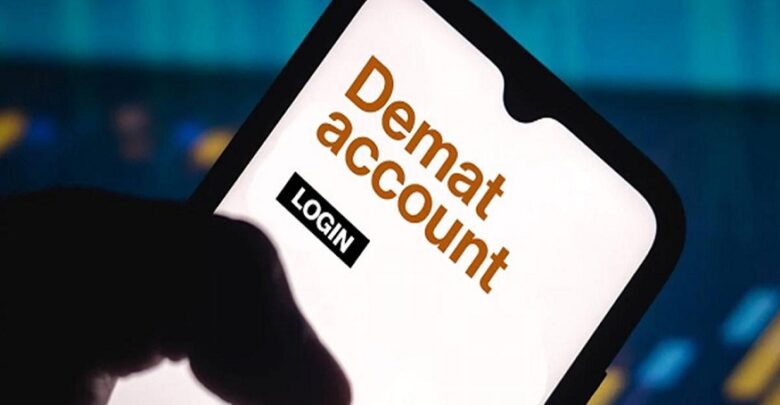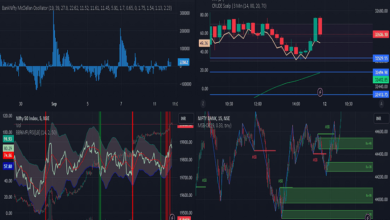Opening a Demat Account: Documents and Process Explained

In today’s rapidly advancing financial landscape, investing in stocks has become a popular way to grow one’s wealth. However, if you are just starting out, you might feel slightly overwhelmed by the jargon and the procedures involved. One of the key steps in the journey of becoming an investor in India is to Open a Demat Account. In this article, we will explore the essential documents and step-by-step process required to open a Demat Account. We’ll unravel this admittedly complex topic with simplicity and clarity, ensuring you gain both understanding and confidence.
What is a Demat Account?
A Demat Account, short for a Dematerialised Account, allows investors to hold their shares and securities in an electronic format. It eliminates the need for physical certificates and paves the way for seamless trading. Much like a savings bank account that holds your money, a Demat Account holds your shares, bonds, and other securities. With the digital age in full swing, a Demat Account is indispensable for anyone looking to dive into the world of stock markets.
Why Open a Demat Account?
Safety and Convenience
Gone are the days when investors had to worry about the safekeeping of physical share certificates. A Demat Account provides a secure and convenient way to manage your investments. Imagine losing a physical share certificate—what a headache! With a Demat Account, such worries are a thing of the past.
Speed and Efficiency
Transactions are straightforward and quick with a Demat Account. Whether you’re buying or selling shares, the electronic system ensures your operations are completed with unparalleled speed. The days of waiting indefinitely for transfers to clear are well behind us.
Access to a Wider Range of Securities
Having a Demat Account opens up a world of investment opportunities. From equities and bonds to mutual funds and exchange-traded funds (ETFs), you can hold all these diverse securities in a single account.
Essential Documents Required
Before you can open a Demat Account, you need to ensure you have the necessary documentation. The process mirrors some KYC (Know Your Customer) requirements, ensuring integrity and security in financial transactions.
1. Proof of Identity (PoI)
To establish your identity beyond doubt, you will need any of the following:
- PAN Card: A Permanent Account Number (PAN) card is mandatory for any financial transactions in India.
- Voter ID Card: An identity card issued by the Election Commission.
- Aadhaar Card: A government-issued UID that serves as proof of identity and address.
- Passport: Particularly helpful for NRIs or individuals frequently travelling abroad.
- Driving License: A valid driver’s license can also serve as ID proof.
2. Proof of Address (PoA)
To verify your place of residence, you will need one of the following:
- Aadhaar Card: It doubles as both PoI and PoA.
- Utility Bills: Include recent electricity, water, or gas bills (not older than three months).
- Bank Statement or Passbook: A recent bank statement or an updated passbook with the latest transactions.
- Ration Card: Often used for establishing residency, especially in semi-urban and rural areas.
- Rental Agreement: A legal rental tenancy document serves as valid address proof.
3. Bank Account Proof
For linking purposes, you also need to provide:
- Cancelled Cheque: Displays your current bank account number and IFSC code.
- Bank Statement/Passbook Copy: Typically the latest three-month statement reflecting regular transactions.
4. Photographs
Recent passport-sized photographs are typically required, as they are often part of the standard procedure for official records.
Step-by-Step Process to Open a Demat Account
1. Choose a Depository Participant (DP)
A Depository Participant acts as an intermediary between you and the depository. They are typically banks, financial institutions, or brokers who are authorised to offer Demat services. Compare various DPs based on factors like service charges, reliability, and customer service.
2. Fill Out the Account Opening Form
Once you choose a DP, the next step is to fill out an account opening form. This paperwork will require you to submit the documents outlined above. Many DPs now offer online forms, simplifying this process significantly.
3. Fulfil KYC Requirements
Your DP will perform a KYC check. This includes verifying your identity and address proofs. Some DPs employ in-person or video-based verification to ensure transparency and security.
4. Sign the Agreement
Once your KYC is successfully verified, you’ll need to sign an agreement that outlines the rights and duties of both parties. Pay attention to the terms and conditions, especially regarding service charges.
5. Receive Your Depository Participant ID
After completing the above steps, the DP will provide you with a unique Beneficial Owner Identification Number (BO ID), which you’ll use for all electronic transactions.
6. Start Trading
With a fully functional Demat Account, you can now start trading. Connect it with a trading account to buy and sell stocks seamlessly.
Things to Consider Before Opening a Demat Account
Fees and Charges
Understanding the structure of fees is crucial before you open a Demat Account. These may include account opening charges, annual maintenance fees, transaction charges, and more. Always ask for a detailed fee schedule to avoid unpleasant surprises.
Customer Support
Opt for a DP known for excellent customer service. Whether you’re seeking guidance on transactions or facing technical issues, responsive support can be vital.
Portfolio Management Services
Some DPs offer additional services such as portfolio management and advisory, for those interested in a more hands-off approach to investing.
Conclusion
Opening a Demat Account is a critical step in your investment journey, providing the tools and foundation necessary for participating in the stock market. With the right documents and a keen understanding of the process, this seemingly daunting task becomes straightforward.
Take the plunge, open a Demat Account and explore the vast array of investment opportunities available in today’s financial markets. Not only will it safeguard your assets in an efficient manner, but it will also empower you to make informed and strategic investment decisions. So, why wait? Transform your paper assets into digital gold and embark on your investment adventure today.
In the ever-changing world of finance, being equipped with the right tools and knowledge can indeed be your greatest asset.




